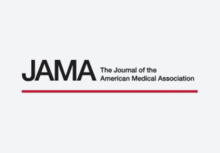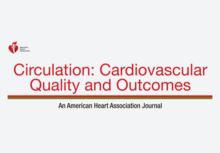Liu M, Sandhu S, Maddox KEJ, Wadhera RK. Health Equity Adjustment and Hospital Performance in the Medicare Value-Based Purchasing Program. JAMA. 2024;331(16):1387–1396. https://pubmed.ncbi.nlm.nih.gov/38536161/. doi:10.1001/jama.2024.2440
Publications
2024
Wadhera RK, Maddox KEJ. Policy Strategies to Advance Cardiovascular Health in the United States—Building on a Century of Progress. Circulation: Cardiovascular Quality and Outcomes. 2024;17. https://www.ahajournals.org/doi/10.1161/CIRCOUTCOMES.123.010149. doi:https://doi.org/10.1161/CIRCOUTCOMES.123.010149
Wadhera RK, Secemsky EA, Xu J, Yeh RW, Song Y, Goldhaber SZ. Community Socioeconomic Status, Acute Cardiovascular Hospitalizations, and Mortality in Medicare, 2003 to 2019. Circulation: Cardiovascular Quality and Outcomes. 2024;17. https://pubmed.ncbi.nlm.nih.gov/38597091/. doi:https://doi.org/10.1161/CIRCOUTCOMES.123.010090
Perera S, Zheng Z, Wadhera RK. Cardiovascular Health, Lifestyle Factors, and Social Determinants in Asian Subpopulations in the United States. Am J Cardiol. 2024;216:77–86. https://pubmed.ncbi.nlm.nih.gov/38369173/. doi:10.1016/j.amjcard.2024.01.029
Oddleifson A, Zheng Z, Wadhera RK. Out-of-pocket prescription drug costs for adults with cardiovascular risk factors under Amazon’s direct-to-consumer pharmacy service. Am Heart J. 2024;271:20–27. https://pubmed.ncbi.nlm.nih.gov/38365072/. doi:10.1016/j.ahj.2024.02.004
Asnani A, Wadhera RK, Yeh RW. Assessing STEMI Outcomes in Patients With Cancer: A Call for Integrated Cardiovascular and Cancer Phenotyping. JACC: CardioOncology. 2024;6(1):130–132. https://pubmed.ncbi.nlm.nih.gov/38510284/. doi:10.1016/j.jaccao.2023.12.002
Secemsky EA, Kirksey L, Quiroga E, King CM, Martinson M, Hasegawa JT, West NEJ, Wadhera RK. Impact of Intensity of Vascular Care Preceding Major Amputation Among Patients With Chronic Limb-Threatening Ischemia. Circ Cardiovascular Interv. 2024;17(1):e012798. https://pubmed.ncbi.nlm.nih.gov/38152880/. doi:10.1161/CIRCINTERVENTIONS.122.012798
Kyalwazi AN, Narasimmaraj P, Xu J, Song Y, Wadhera RK. Medicare’s Value-Based Purchasing And 30-Day Mortality At Hospitals Caring For High Proportions Of Black Adults. Health Aff. 2024;43(1):118–124. https://pubmed.ncbi.nlm.nih.gov/38190594/. doi:10.1377/hlthaff.2023.00740
Troy AL, Ahmad I, Zheng Z, Wadhera RK. Food Insecurity Among Low-Income U.S. Adults During the COVID-19 Pandemic. Ann Intern Med. 2024;177(2):260–262. https://pubmed.ncbi.nlm.nih.gov/38163365/. doi:10.7326/M23-2282
Oddleifson A, Holmes DN, Alhanti B, Xu X, Heidenreich PA, Wadhera RK, Allen LA, Greene SJ, Fonarow GC, Spatz ES, et al. Bundled Payments for Care Improvement and Quality of Care and Outcomes in Heart Failure. JAMA Cardiol. 2024:e235009. doi:10.1001/jamacardio.2023.5009







